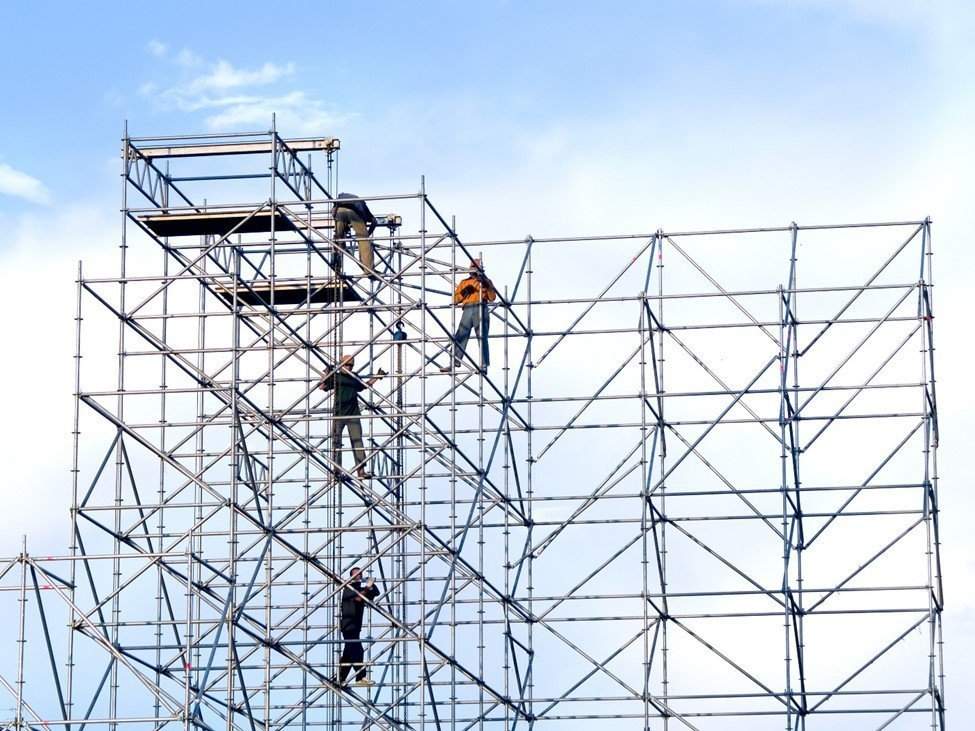Scaffolding Training in Johannesburg Germiston

Scaffolding Training in Johannesburg
Scaffolding Training in Johannesburg , Pretoria, Germiston , Cape Town, Durban, Polokwane , WItbank, Rustenburg , Bloemfontein, Mthatha , Pietermaritzburg , East London and south africa as a whole.
Scaffolding Training in Johannesburg Germiston
Scaffolding is a temporary structure made of steel, aluminum, or timber used to support people and materials in the construction or repair of buildings, bridges, and other large structures. It is also used to help provide safe access to these areas.
Scaffolding is typically erected by certified scaffolders and is generally used to hold materials such as concrete, bricks, or even entire walls and columns in place during construction.
The purpose of scaffolding is to provide access to areas that would otherwise be difficult to reach. This includes areas on high-rise buildings, towers, and other structures that are too tall for a person to safely reach without a lift or other equipment. Scaffolding also helps to reduce the risk of injury from falls from heights.
By providing secure footing and easy access to areas, scaffolding can significantly reduce the chances of an accident occurring.
Scaffolding can also be used for decorative purposes, such as to support banners or lights on a large building.
In addition, it is often used to create temporary walkways for pedestrians in the case of construction sites or events.
Operator School at a Glance
The history of scaffolding
Scaffolding has been around for thousands of years, with the first known use dating back to Ancient Egypt and Greece. The idea was that if a structure needed to be built quickly or to provide access to high places, scaffolding could be used. In Medieval Europe, scaffolding was used in the construction of cathedrals and other large structures. This type of scaffolding was made from wooden planks and ladders and was an integral part of the construction process.
The modern form of scaffolding can be traced back to the 19th century when metal poles were introduced. This new form of scaffolding provided more support than wooden scaffolding and allowed for higher and more complex structures to be built. With the introduction of safety regulations in the 20th century, scaffolding became an even more important part of construction projects. It is now a requirement in many countries for construction sites to have a safe system of work, including scaffolding.
Scaffolding has come a long way since its first use thousands of years ago. It is now seen as an essential part of the construction process and is used to ensure the safety and stability of buildings, bridges and other structures.

Find us in Centurion, Magaliesburg, Mohlakeng, Katlehong, Edenvale, Vereeniging, Germiston, Wattville, Vosloorus, Thokoza, Hammanskraal, Krugersdorp, Duduza, Boksburg, Bophelong, Bekkersdal, Alexandra , Daveyton, Kempton Park, Tsakane, Bronberg, Bronkhorstspruit, Heidelberg, Randfontein, Reiger Park, Cullinan, Irene, Sandton, Randburg, Ratanda, Springs, Muldersdrift, Evaton, Midrand, Kagiso, Nigel, Alberton, Carletonville, Tembisa, Johannesburg, Impumelelo, KwaThema, Benoni, Westonaria Kromdraai, Lenasia, Atteridgeville, Sharpeville, Ekangala, Zithobeni, Roodepoort, Sebokeng, Mamelodi, Isando, Meyerton, Soweto, Brakpan, Refilwe, Pretoria, Vanderbijlpark, Germiston, Khutsong, Soshanguve, Boipatong, Devon.
Overhead crane Operator Training
Telescopic boom handler Training
Superlink Driving Training
Fire safety training
Truck mounted crane Operator training
Reach stacker Training
Scaffolding Training
Flux core Welding Training
Risk Assessment training
Bulldozer Operator Training
Mobile Crane Operator Training
ADT Articulated Dump Truck Training
Health and Safety Officer Training
Excavator Operator Training
TIG welding Training
Fitting and turning course
Bobcat Skid Steer Training
Rigging Training
Dangerous goods Training
Front End loader Training
CO2/ MIG welding Training
BoilerMaker Training
Road Roller Driver Training
working at heights training
Forklift Training
Pipe fitter Training
Reach stacker Training
777 Dump Truck Training
Hazchem training
Drill Rig Training
Arc or Stick welding Training
Plumbing Courses
TLB Training
Road Roller training
Electrical Trade Test Training
First Aid Training
Diesel Mechanics Training
Grader Training